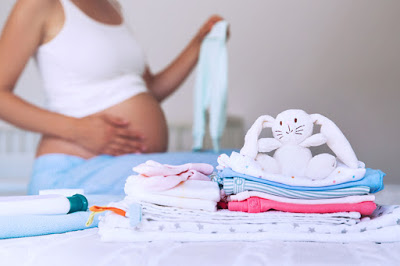
by Dr. Abayomi Ajayi
Do you know you can choose the s*x of your children before they are born? Everyone wants a healthy baby and it is normal to have a preference. Gender selection enables that. It is a procedure that allows intending parents to choose the sex of their baby.
Normally, all couples have a 50/50 chance of conceiving a boy or a girl; however, you might want to stack the odds in your favour, either for medical or some reasons to balance your family.
You may wish for a specific gender for your child if you wish to prevent inheritance of sex-linked genetic diseases.
There was a time the sex selection process could only be done abroad. Essentially the primary aim of assisted conception is to help couples achieve pregnancy, which is a primary and fundamental human requirement.
Research shows that as parents get closer to achieving their total desired number of children, the gender composition of the children already born becomes an important determinant of whether you would have another child.
Under these conditions, sex selection can help maximise your chances of having a small family size of both sexes. So instead of trying repeatedly and hoping on chance, a more certain method of selecting the sex of the child can be considered.
Sex selection is important for medical reasons in order to eliminate genetic diseases like Haemophila A and Duchenne’s muscular dystrophy that occur in males but are only carried or transferred by females.
If yours is a family with a history of some of these conditions, you could prefer to apply gender selection and opt to have only female children.
Pre-implantation Genetic Diagnosis or PGD is one of the best scientific methods for selecting the gender of a child. If properly done, PGD is almost 100 per cent certain of selecting the desired sex. In PGD, the woman first goes through IVF, where her ovaries are stimulated using medications to produce eggs.
The eggs are retrieved from her body using a special technique. They are fertilised using her partner’s sperms and in the resulting embryos, small cells are removed from each and analysed to determine the gender of the particular embryo.
Embryos of the desired sex are then transferred into the woman’s womb with the hope that they will attach to the uterine lining and grow into a viable pregnancy.
The gender of an embryo is determined by the chromosomes carried by the sperm. A sperm can carry either the X or the Y chromosome. The woman’s egg only contributes the X chromosome to the fertilised embryo. The presence of the Y chromosome in the sperm will create a male baby (XY). Two X chromosomes – one X from the sperm and one X from the egg – will produce a female baby (XX).
Another method known as Sperm Sorting/Microsort, involves the sperms being sorted using fluorescent technology into Y chromosome for the boy carrying sperms and X chromosome (girl) carrying sperms. The technology is based on the fact that the X chromosome is substantially larger than the Y chromosome.
The process uses a fluorescent DNA stain that attaches to the DNA of each sperm and a sorter to identify and separate the sperms.
However, not all couples are suitable for Microsort. The sperm count of the male partner must be within normal limits (at least 20 million sperms per ml with 50 per cent motility). Sperm samples are collected over a period and banked until a total of about 200 million sperms are collected. They are frozen and sent for sorting.
The sorted samples are sent back usually within three to four weeks and depending on the desired gender, the appropriate sperm is used to inseminate the woman or to fertilise her egg during processes of assisted reproduction.
The chances that the child will be a boy are up to 80 per cent while the chances that they will be a girl are over 90 per cent.

Microsort method is based on separating sperm according to how much DNA is in the sperm. If a sperm with extra or less DNA per chromosome (abnormal sperm) fertilises an egg, it could result in pregnancy failure or a high risk of miscarriage.
Alongside sex determination, PGD can also check if the embryos are genetically normal.
Invest In Social Force & Get 50%
Click HERE >>
To Buy Cheap MTN & GLO Data
Click HERE >>
You may be interested

Arsenal Equal Chelsea’s London Derby Feat After 5-1 Win Vs Palace
Webby - December 21, 2024Arsenal equaled Chelsea’s London derby achievement following their 5-1 win against Crystal Palace in Saturday’s Premier League game at Selhurst…

Haaland Backs Guardiola To Turn Man City’s Poor Form Around
Webby - December 21, 2024Erling Haaland had said he and his Manchester City teammates are still backing manager Pep Guardiola to turn the team’s…

PSG To Reignite Interest In Osimhen
Webby - December 21, 2024Paris Saint-Germain have contacted Napoli to discuss signing Victor Osimhen in January, according to reports in France.It is reported that…

















![American Pastor, David Wilson Seen Eating The Box Of Woman Who Isn’t His Wife [Video]](https://onlinenigeria.com/wp-content/uploads/2019/10/american-pastor-david-wilson-seen-eating-the-box-of-woman-who-isnt-his-wife-video-150x150.jpg)








